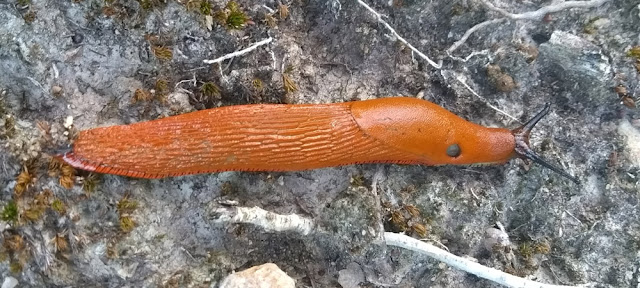The Touraine Loire Valley is home to some impressively large land snails and slugs.
This Yellow Cellar Slug Limacus flavus (Fr. Limace des caves) and its family live in our kitchen. They are nocturnal, so we rarely see them. For scale, the tiles are 20 cm².
I encounter Ash-black Slugs Limax cinereoniger (Fr. Grande limace) in the larger well established forests. They can be pale and stripey like this one...
...or they can be charcoal grey with a pale grey dorsal ridge.
Red Slugs Arion rufus (Fr. Grande loche) can be encountered anywhere -- in the forest, on waste ground, in gardens and often on roads, paths and tracks.
The famous edible Roman/Burgundian Snail Helix pomatia (Fr. Escargot de Bourgogne) occurs in isolated small populations on sites that don't get much human disturbance or are managed with a light touch. They like semi-natural parks or woodland edges. A significant number are white...
...but most are brown.








2 comments:
Glowworm larvae.... correction....they don't wait for them to die, they wait for the toxin to dissolve the immediate area... and then go in and drink.... also, the larger snails [like your big Turkish delight] can actually survive.
The first effect of the toxin is to relax the snail.... but a large snail on our doorstep moved four inches in two days whilst being fed on by two larvae... fell off the step, into thick vegetation.... looked dead, left it there for the larvae, but it must've begun to recover, because it had moved back up towards the top of the step and no sign of the larvae....
Tim: Thanks as ever for the extra information.
Post a Comment